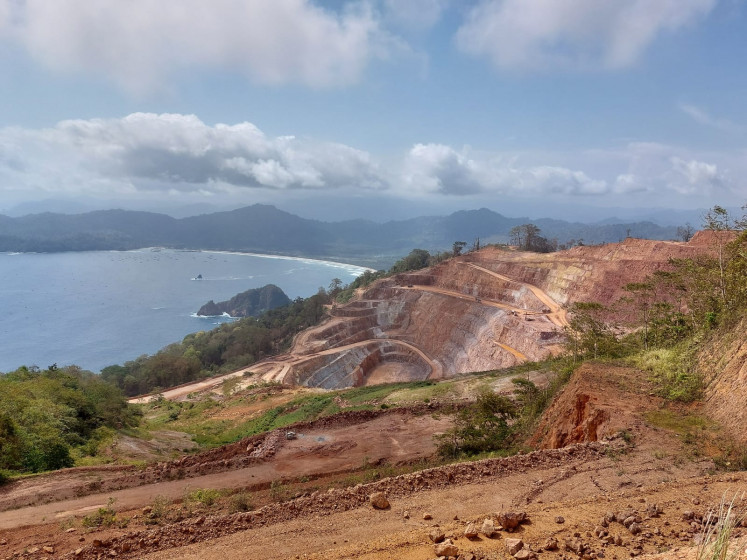
Climate Change and its Impact on Sustainable Development Goals (SDGs)
Introduction
Climate change is a pervasive global phenomenon that affects all aspects of life. The rise in temperatures since the advent of industrialisation is evident, with the last decade marking one of the warmest periods in human history. This increase in temperature is primarily attributed to the emission of greenhouse gases during industrial processes.
The Urgent Need for Action
If current greenhouse gas (GHG) emissions continue on their present trajectory, the planet is projected to surpass 2.8°C temperature increase by the end of the 21st century (13th UN Emission Gap Report 2022), leading to catastrophic and irreversible consequences. Already, temperatures have risen by 1.1˚C, and the evidence of this rise is apparent in the form of extreme weather events and escalating disasters. The frequency and intensity of cyclones, typhoons, and hurricanes are on the rise, while heatwaves have become more pronounced, frequent, and severe, even occurring in previously unheard-of seasons.
Case Study: Early March Heatwave
An illustrative case is the early March heatwave in 2022, which originated in the northwest parts of India and Pakistan, subsequently impacting the Horn of Africa and battering Europe. The United Kingdom experienced one of the most severe heatwave conditions in recorded human history, with temperatures soaring to 41°C in London and causing a week-long emergency situation marked by raging forest fires, melting runways, and highways. The heatwave then spread to the United States and China, severely affecting the latter. Post-pandemic China faced electricity generation disruptions due to massive water scarcity and endured a drought-like situation, resulting in disruptions to supply chains and significant crop yield losses, estimated at 15%.
Causes of Climate Change
The earth’s atmospheric system has historically maintained a temperature of around 15˚C, with an atmospheric CO2 concentration of approximately 280 ppm, remaining relatively stable for a staggering period of 800,000 years (climate.nasa.gov). This remarkable stability is attributed to the earth’s well-balanced carbon cycle, which manages greenhouse gas (GHG) emissions and their absorption by natural sinks.
Impact of Human Activities
However, with the advent of industrialisation, a significant shift occurred. Unprecedented amounts of fossil fuels, such as coal, gas, and oil, have been extracted and utilised to meet the growing energy demands of humanity and various industries. The combustion of these fossil fuels releases greenhouse gases into the atmosphere, particularly CO2. As a result, the current atmospheric CO2 concentration stands at 421 ppm, as observed in the Mauna Loa lab of the National Oceanic and Atmospheric Administration (NOAA) on 3 June 2022.
Consequences of Climate Change
Climate change presents two primary categories of risks: physical risks and chronic risks. Physical risks include acute events like extreme weather phenomena such as heatwaves, floods, heavy rainfall, and intense cyclonic storms. Chronic risks encompass long-term impacts like glacier melting, permafrost thawing, and rising sea levels. These risks have already resulted in significant economic losses globally.
Increased Visibility of Climate Change Impacts
The evidence of climate change impacts has become more pronounced in recent times. Extreme weather events are occurring more frequently and with greater intensity. For example, the early heatwave in March 2022 affected India, Europe, and China, followed by devastating floods in Pakistan in September 2022. These events highlight the urgent need for effective mitigation and adaptation measures.
Mitigation and Adaptation in the Face of Climate Crisis
The IPCC AR6 report, titled “A Code Red for Humanity,” serves as a stark warning of the escalating occurrences of extreme weather events worldwide. To address the challenges ahead, it is imperative to accelerate mitigation efforts by transitioning to carbon-neutral energy, decarbonising industrial processes, and improving sustainable transportation methods. Additionally, adaptation efforts must be scaled up significantly, including climate-proofing critical infrastructure and enhancing the adaptive capacity of vulnerable communities.
The Importance of Global Cooperation
Time is of the essence, as the window for effective climate action is narrowing. International cooperation and commitment are crucial to meet the targets set by the Paris Agreement and limit global warming to below 2˚C, preferably to 1.5˚C. To ensure a sustainable future for generations to come, collective efforts are needed to address the causes of climate change, acknowledge the consequences, observe the increased visibility of impacts, and embrace mitigation and adaptation strategies as vital components of a global climate response.
Conclusion
Climate change poses significant challenges to achieving the Sustainable Development Goals (SDGs). It is crucial to pursue sustainable solutions and global cooperation to combat climate change effectively and secure a sustainable future for generations to come. By taking timely action and implementing both mitigation and adaptation measures, we can strive to preserve the delicate balance of the earth’s atmosphere and ensure a resilient and prosperous future for our planet.
SDGs, Targets, and Indicators
-
SDG 13: Climate Action
- Target 13.1: Strengthen resilience and adaptive capacity to climate-related hazards and natural disasters
- Target 13.2: Integrate climate change measures into national policies, strategies, and planning
- Target 13.3: Improve education, awareness-raising, and human and institutional capacity on climate change mitigation, adaptation, impact reduction, and early warning
- Target 13.A: Implement the commitment undertaken by developed-country parties to the United Nations Framework Convention on Climate Change to a goal of mobilizing jointly $100 billion annually by 2020 from all sources to address the needs of developing countries in the context of meaningful mitigation actions and transparency on implementation and fully operationalize the Green Climate Fund through its capitalization as soon as possible
- Target 13.B: Promote mechanisms for raising capacity for effective climate change-related planning and management in least developed countries and small island developing States, including focusing on women, youth, and local and marginalized communities
- Indicator 13.1.1: Number of deaths, missing persons, and directly affected persons attributed to disasters per 100,000 population
- Indicator 13.2.1: Number of countries that have communicated the strengthening of institutional, systemic, and individual capacity-building to implement adaptation, mitigation, and technology transfer, and development actions
- Indicator 13.3.1: Number of countries that have integrated mitigation, adaptation, impact reduction, and early warning into primary, secondary, and tertiary curricula
- Indicator 13.A.1: Mobilized amount of United States dollars per year starting in 2020 accountable towards the $100 billion commitment
- Indicator 13.B.1: Number of least developed countries and small island developing States that are receiving specialized support, and amount of support, including finance, technology, and capacity-building, for mechanisms for raising capacities for effective climate change-related planning and management
Analysis:
-
SDG 13: Climate Action
The article primarily addresses the issue of climate change and its consequences, which aligns with SDG 13: Climate Action. The article discusses the rise in temperatures, extreme weather events, and the urgent need to address climate change through mitigation and adaptation measures.
Targets under SDG 13 that can be identified based on the article’s content include:
- Target 13.1: Strengthen resilience and adaptive capacity to climate-related hazards and natural disasters
- Target 13.2: Integrate climate change measures into national policies, strategies, and planning
- Target 13.3: Improve education, awareness-raising, and human and institutional capacity on climate change mitigation, adaptation, impact reduction, and early warning
- Target 13.A: Implement the commitment undertaken by developed-country parties to the United Nations Framework Convention on Climate Change to a goal of mobilizing jointly $100 billion annually by 2020 from all sources to address the needs of developing countries in the context of meaningful mitigation actions and transparency on implementation and fully operationalize the Green Climate Fund through its capitalization as soon as possible
- Target 13.B: Promote mechanisms for raising capacity for effective climate change-related planning and management in least developed countries and small island developing States, including focusing on women, youth, and local and marginalized communities
The article highlights the need to strengthen resilience and adaptive capacity to climate-related hazards and natural disasters, integrate climate change measures into national policies, improve education and awareness on climate change, implement financial commitments to support developing countries, and promote capacity-building in vulnerable regions.
The article also mentions several indicators that can be used to measure progress towards the identified targets, such as the number of deaths and directly affected persons attributed to disasters, the number of countries communicating capacity-building efforts, the integration of climate change into curricula, the mobilized amount of financial support, and the support received by least developed countries and small island developing States.
Table: SDGs, Targets, and Indicators
| SDGs | Targets | Indicators |
|---|---|---|
| SDG 13: Climate Action | Target 13.1: Strengthen resilience and adaptive capacity to climate-related hazards and natural disasters | Indicator 13.1.1: Number of deaths, missing persons, and directly affected persons attributed to disasters per 100,000 population |
| Target 13.2: Integrate climate change measures into national policies, strategies, and planning | Indicator 13.2.1: Number of countries that have communicated the strengthening of institutional, systemic, and individual capacity-building to implement adaptation, mitigation, and technology transfer, and development actions | |
| Target 13.3: Improve education, awareness-raising, and human and institutional capacity on climate change mitigation, adaptation, impact reduction, and early warning | Indicator 13.3.1: Number of countries that have integrated mitigation, adaptation, impact reduction, and early warning into primary, secondary, and tertiary curricula | |
| Target 13.A: Implement the commitment undertaken by developed-country parties to the United Nations Framework Convention on Climate Change to a goal of mobilizing jointly $100 billion annually by 2020 from all sources to address the needs of developing countries in the context of meaningful mitigation actions and transparency on implementation and fully operationalize the Green Climate Fund through its capitalization as soon as possible | Indicator 13.A.1: Mobilized amount of United States dollars per year starting in 2020 accountable towards the $100 billion commitment | |
| Target 13.B: Promote mechanisms for raising capacity for effective climate change-related planning and management in least developed countries and small island developing States, including focusing on women, youth, and local and marginalized communities | Indicator 13.B.1: Number of least developed countries and
Behold! This splendid article springs forth from the wellspring of knowledge, shaped by a wondrous proprietary AI technology that delved into a vast ocean of data, illuminating the path towards the Sustainable Development Goals. Remember that all rights are reserved by SDG Investors LLC, empowering us to champion progress together. Source: wionews.com
Join us, as fellow seekers of change, on a transformative journey at https://sdgtalks.ai/welcome, where you can become a member and actively contribute to shaping a brighter future.
|







